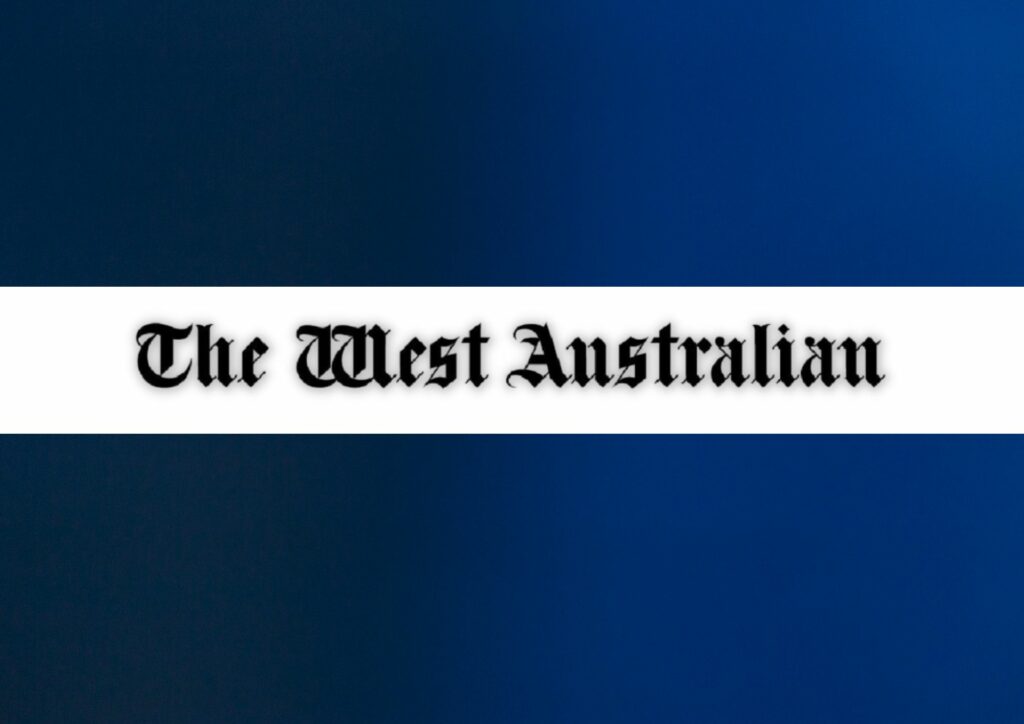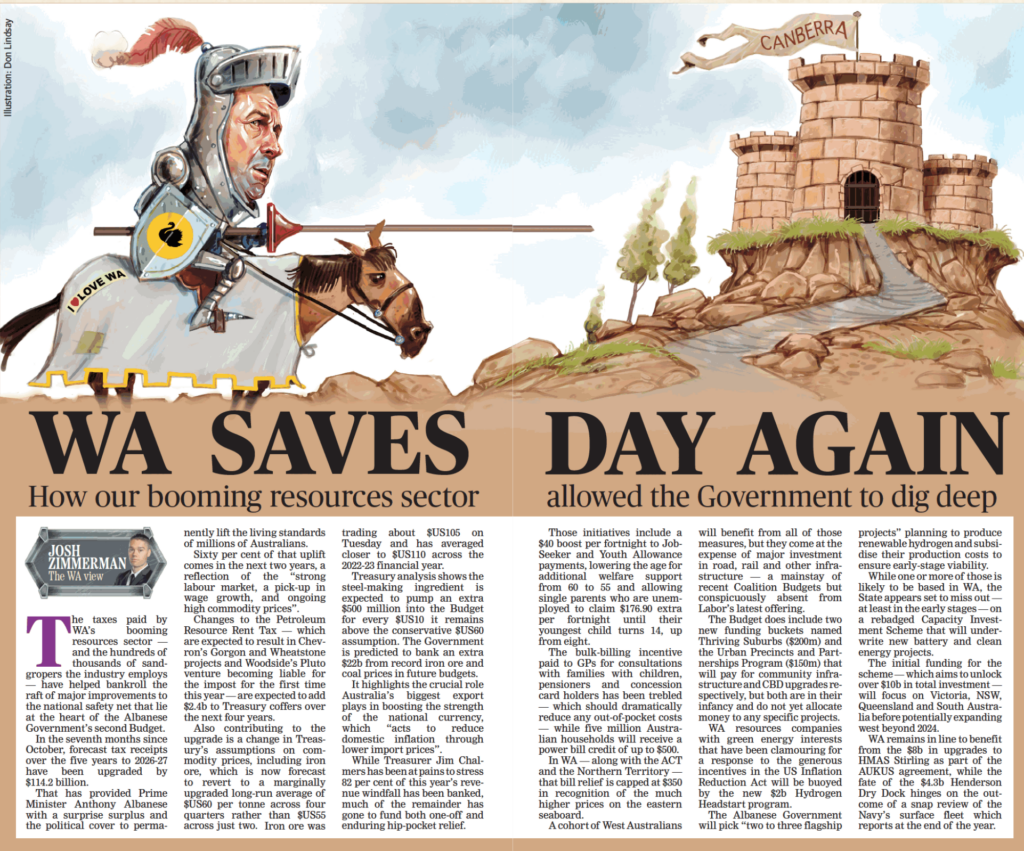
Article by Josh Zimmerman courtesy of the West Australian.
Illustration Don Lindsay.

How our booming resources sector allowed the Government to dig deep.
The taxes paid by WA’s booming resources sector — and the hundreds of thousands of sandgropers the industry employs have helped bankroll the raft of major improvements to the national safety net that lie at the heart of the Albanese Government’s second Budget.
In the seventh months since October, forecast tax receipts over the five years to 2026-27 have been upgraded by $114.2 billion.
That has provided Prime Minister Anthony Albanese with a surprise surplus and the political cover to permanently lift the living standards of millions of Australians.
Sixty per cent of that uplift comes in the next two years, a reflection of the “strong labour market, a pick-up in wage growth, and ongoing high commodity prices”.
Changes to the Petroleum Resource Rent Tax — which are expected to result in Chevron’s Gorgon and Wheatstone projects and Woodside’s Pluto venture becoming liable for the impost for the first time this year — are expected to add $2.4b to Treasury coffers over the next four years.
Also contributing to the upgrade is a change in Treasury’s assumptions on commodity prices, including iron ore, which is now forecast to revert to a marginally upgraded long-run average of $US60 per tonne across four quarters rather than $US55 across just two. Iron ore was trading about $US105 on Tuesday and has averaged closer to $US110 across the 2022-23 financial year.
Treasury analysis shows the steel-making ingredient is expected to pump an extra $500 million into the Budget for every $US10 it remains above the conservative $US60 assumption. The Government is predicted to bank an extra $22b from record iron ore and coal prices in future budgets.
It highlights the crucial role Australia’s biggest export plays in boosting the strength of the national currency, which “acts to reduce domestic inflation through lower import prices”.
While Treasurer Jim Chalmers has been at pains to stress 82 per cent of this year’s revenue windfall has been banked, much of the remainder has gone to fund both one-off and enduring hip-pocket relief.
Those initiatives include a $40 boost per fortnight to Job-Seeker and Youth Allowance payments, lowering the age for additional welfare support from 60 to 55 and allowing single parents who are unemployed to claim $176.90 extra per fortnight until their youngest child turns 14, up from eight.
The bulk-billing incentive paid to GPs for consultations with families with children, pensioners and concession card holders has been trebled — which should dramatically reduce any out-of-pocket costs — while five million Australian households will receive a power bill credit of up to $500.
In WA — along with the ACT and the Northern Territory — that bill relief is capped at $350 in recognition of the much higher prices on the eastern seaboard.
A cohort of West Australians will benefit from all of those measures, but they come at the expense of major investment in road, rail and other infrastructure — a mainstay of recent Coalition Budgets but conspicuously absent from Labor’s latest offering.
The Budget does include two new funding buckets named Thriving Suburbs ($200m) and the Urban Precincts and Partnerships Program ($150m) that will pay for community infrastructure and CBD upgrades respectively, but both are in their infancy and do not yet allocate money to any specific projects.
WA resources companies with green energy interests that have been clamouring for a response to the generous incentives in the US Inflation Reduction Act will be buoyed by the new $2b Hydrogen Headstart program.
The Albanese Government will pick “two to three flagship projects” planning to produce renewable hydrogen and subsidise their production costs to ensure early-stage viability.
While one or more of those is likely to be based in WA, the State appears set to miss out — at least in the early stages — on a rebadged Capacity Investment Scheme that will underwrite new battery and clean energy projects.
The initial funding for the scheme — which aims to unlock over $10b in total investment — will focus on Victoria, NSW, Queensland and South Australia before potentially expanding west beyond 2024.
WA remains in line to benefit from the $8b in upgrades to HMAS Stirling as part of the AUKUS agreement, while the fate of the $4.3b Henderson Dry Dock hinges on the outcome of a snap review of the Navy’s surface fleet which reports at the end of the year.